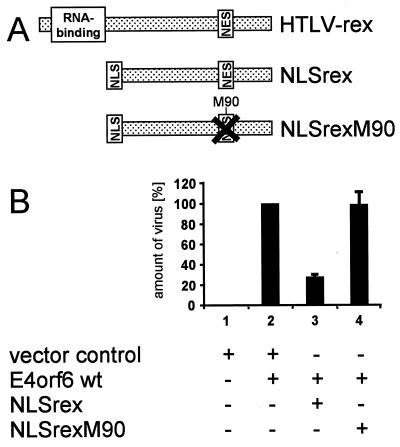FIG. 4.
Interference of an export competitor with virus production. (A) Schematic depiction of export competitors. The carboxy-terminal portion of the human T-cell leukemia virus type 1 (HTLV-1) rex protein was fused to the nuclear localization signal (NLS) of simian virus 40 T antigen. A mutant of this chimera carrying a small deletion within the rex NES was used as a control. Another control was performed by expressing beta-galactosidase. (B) Cells were transfected with expression plasmids for wild-type (wt) E4orf6 (1 μg) along with beta-galactosidase or the NLSrex chimeric protein or a mutant NLSrex chimera lacking a functional NES (2 μg each; Superfect; Qiagen). After transfection, the function of E4orf6 in virus production was assayed as described in the legend to Fig. 3. The amount of virus obtained in the presence of E4orf6 and beta-galactosidase was set to 100%, and the other results were normalized accordingly.

